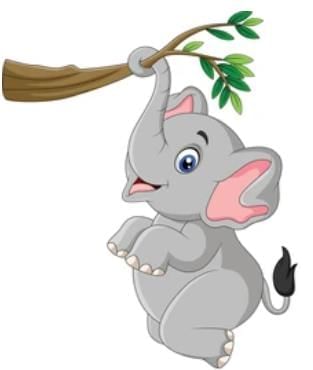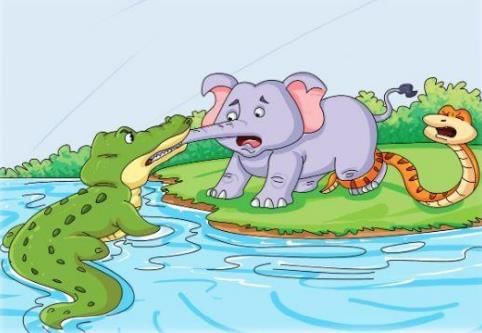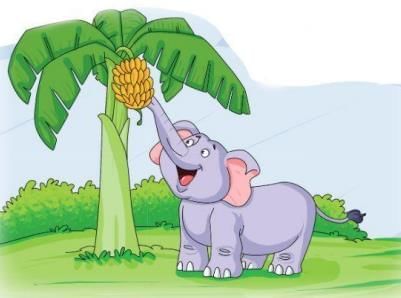How the Elephant Got Its Trunk! Chapter Notes | English Class 2 ICSE PDF Download
| Table of contents |

|
| Introduction |

|
| Key Points |

|
| Explanation |

|
| Message |

|
Introduction
This chapter tells a fun story about how elephants got their long trunks. Long ago, elephants had small noses, but a curious little elephant changed that. He asked many questions and went on an adventure to find out what a crocodile eats. His journey led to a surprising event that gave him a long nose, which became useful for all elephants. The story, written by Rudyard Kipling, teaches us about curiosity and how it can bring big changes.

Key Points
This story is about a curious little elephant who asks many questions.
- Elephants long ago had short, round noses, not trunks.
- The little elephant goes to the Limpopo River to learn what crocodiles eat.
- A crocodile pulls his nose, making it long like a trunk.
- The new trunk helps him do many things, like picking fruit and staying cool.
- All elephants get long trunks after the little elephant’s adventure.
Explanation
In the past, elephants did not have trunks. They had a small, round nose that looked like a boot. Among them was a little elephant who loved asking questions. His family got annoyed and hit him when he asked too much.

One day, he asked what the crocodile eats for dinner. His family scolded him and hit him again, but he was determined to find out. A kind bird named Kolokolo Bird told him to go to the Limpopo River.
The little elephant traveled far and met a snake, who also hit him. Then, he stepped on a log that turned out to be a crocodile. The crocodile tricked him by saying it would whisper the answer. When the little elephant got close, the crocodile grabbed his nose and said it would eat him.

The little elephant pulled back, and the crocodile pulled harder, stretching his nose to five feet long. A snake helped him, and they were stronger than the crocodile, who let go. His nose stayed long and never went back to normal. He found it very useful. He used it to hit a bee, pick bananas from a tall tree, and put mud on his head to stay cool.

When he returned home, his family was shocked and called it ugly. Angry, he hit them with his new trunk. Soon, they saw its benefits and went to the crocodile to get trunks too. From then on, all elephants had long trunks like the curious little one.
Message
The story teaches us that being curious can lead to big discoveries. The little elephant’s questions and bravery helped all elephants get a useful trunk. It also shows that something new might seem strange at first but can turn out to be very helpful.
New Words with Meanings
- Bulging: Sticking out in a round shape.
- Boot: Strong footwear covering the foot and ankle.
- Smack: To hit or slap.
- Hushed: Asking someone to be quiet.
- Bank: The sloping land at the side of a river.
- Winked: Closing one eye for a very short time.
- Excuse: A polite way to ask or interrupt.
- Kneeled down: Sitting on the ground on your knees.
- Whisper: Speaking very quietly.
- Stretch: Becoming longer.
- Tugging: Pulling something quickly with force.
- Stung: Causing pain by pricking.
- Annoyed: Feeling angry.
|
38 docs|19 tests
|
FAQs on How the Elephant Got Its Trunk! Chapter Notes - English Class 2 ICSE
| 1. What is the main theme of the story "How the Elephant Got Its Trunk"? |  |
| 2. Who are the key characters in "How the Elephant Got Its Trunk"? |  |
| 3. What lesson can children learn from "How the Elephant Got Its Trunk"? |  |
| 4. How does the story illustrate the concept of evolution? |  |
| 5. In what ways does "How the Elephant Got Its Trunk" engage young readers? |  |














